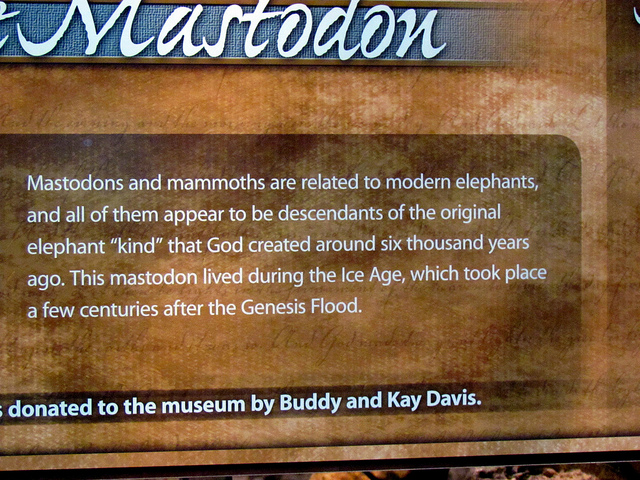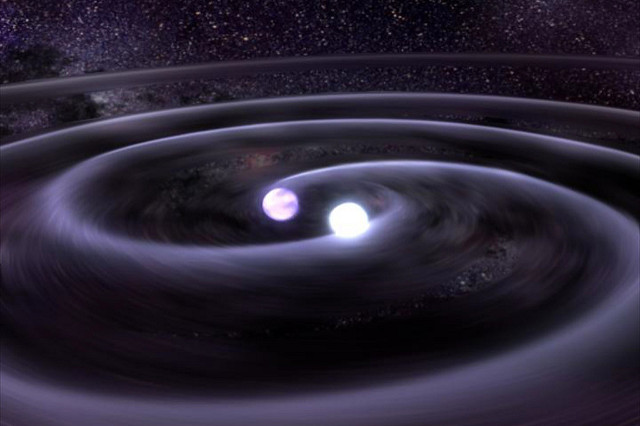Juno just before launch on August 4, 2011 | Photo: brownpau, CC BY 2.0
On Final Approach

I’m looking forward to America’s Independence Day this year, but not because of the long weekend or the fireworks or the only slightly unnerving semi-militant nationalism. No, the reason I’m so gung-ho about it this year is that July 4 is the day that Juno arrives at Jupiter. Juno left Earth on August 5, 2011, on its 372 million mile trip to our solar system’s largest member (after the sun, of course). It went really fast to get there, and it’s going to have to do some pretty scary flying when it arrives. Emily Lakdawalla over at the Planetary Society has a blow-by-blow of the orbital insertion events, but the key is a 35-minute burn that will hopefully send the heavily-armoured craft into an orbit that should allow Juno to survive for twenty months — giving us the closest and best look of the planet we’ve ever had. But given how long it takes light to get to Jupiter at that distance, it’s all going to be up to Juno itself (and, of course, its pre-programmed commands). Jupiter is a pretty rough place to be in orbit — over the course of it’s less-than-two-year mission, Juno will be exposed to the radiation equivalent of 100 million dental x-rays. That’s because Jupiter is so massive that it has a dynamo of liquid metallic hydrogen for an outer core. Juno will have a lot of shielding, and will be in an orbit designed to keep it relatively safe, but even so, it probably won’t make it to the two year mark. Juno will also have a camera on board, mostly for us folks at home! JunoCam wasn’t necessary for Juno’s primary scientific mission — that’ll be accomplished by a suite of sensors as it orbits and makes dozens of passes through Jupiter’s high atmosphere — but they included one because, basically, it’d be a real shame not to. It’ll be a little slow to get going, but we should get some of the best images of Jupiter ever taken if all goes to plan. I can’t wait.
Good News From Britain

Let’s forget “Brexit” for today (I don’t want to talk about it, and probably neither do you) and instead let’s talk about something great that happened this week in the UK. The Government expanded a previous rule, one that bans the teaching of creationism and similar pseudoscience as scientific fact in public schools, to every school that receives any kind of public funding. This includes types of “semi-private” schools known as “Free Schools” and “Academies,” who now stand to lose any and all governmental assistance if they try to indoctrinate their students in science classes. Now of course these schools (and indeed public schools as well) may teach creationism as much as they please in world religion classes — preferably though probably not exclusively alongside other faiths’ ideas about how the world began — but they aren’t allowed to teach it in science classes anymore, which I think we should all be pleased about. The British Humanist Association has all the details.
0.7 Attometres

If you’re not familiar with the unit of distance known as the attometre, you can probably be forgiven. Even my spellchecker doesn’t recognize it. That’s because an attometre is one sextillionth of a metre. One millionth of one trillionth of a metre. That’s 1 x 10-18 m or 0.000000000000000001 m. Just for scale, a proton is only 1 x 10-15m wide (1 femtometre, 1000 attometres). But that’s the scale we’re talking about when measuring gravitational waves, and that’s what LIGO just did for the second time. The first detection, which made the news back in February, actually happened in September of last year and took until February to confirm. This detection — still caused by the inspiraling and collision of two black holes a very long time ago indeed, was smaller, and therefore took longer — almost a second, about five times longer than the last one. The two advanced LIGO detectors registered the ripple as it passed through Earth at the speed of light, stretching and compressing you, me, and everything around us by 0.7 attometres. That’s 7 ten-thousandths of the width of a proton, if you’re keeping score. It’s probably for the best that gravitational waves are so small and take so much energy to make (these ones took the energy equivalent of one entire solar mass, just for reference — that’s what was lost in the combination of the two black holes) since one imagines that space expanding and contracting on a larger scale would probably be unpleasant. The discovery is sure to be the second of hundreds or even thousands to come, leading to all sorts of new discoveries about the gravitational landscape of the universe. Wired has more on the story.
ICYMI
There’s always something going on here at This Week In Tomorrow, so if you don’t come by daily, here’s what you’re missing:
- On Monday, I presented another example of why you might not want to take facebook memes as gospel
- On Tuesday, I gave you a little more J. B. S. Haldane to read
- On Wednesday, I wept and gnashed my teeth at the existence of Orlando shooting “truthers”
- On Thursday, I celebrated the arrival of the Solar Impulse 2 back in Europe after crossing the Atlantic, and
- On Friday, Elle covered the sudden aging-up and sexyfication of a character on the popular show Gotham
If you missed any of it, go check it out!
Best of the Rest
And finally, we have your weekly linkspam (enjoy!):
- Stennis Space Center in Mississippi is getting a new addition: NASA’s last Saturn V rocket
- Soyuz safely touched down in Kazakhstan carrying Tim Kopra, Tim Peake, and Yuri Malenchenko back from the ISS
- Elon Musk says the Telsa Model S floats (for a while)
- Tesla’s offering to buy SolarCity
- China now has the first and second most powerful computers on Earth, and
- Scientists are testing a “tabletop” particle accelerator, aiming to make the LHC look like the Jenny 8
That’s all for today.
***
Thanks for reading! I only get paid in my own (and your) enthusiasm, so please like This Week In Tomorrow on Facebook, follow me on Twitter @TWITomorrow, and tell your friends about the site!
If you like our posts and want to support our site, please share it with others, on Facebook, Twitter, Reddit — anywhere you think people might want to read what we’ve written. Thanks so much for reading, and have a great week.
***
Richard Ford Burley is a human, writer, and doctoral candidate at Boston College, as well as an editor at Ledger, the first academic journal devoted to Bitcoin and other cryptocurrencies. In his spare time he writes about science, skepticism, feminism, and futurism here at This Week In Tomorrow.

